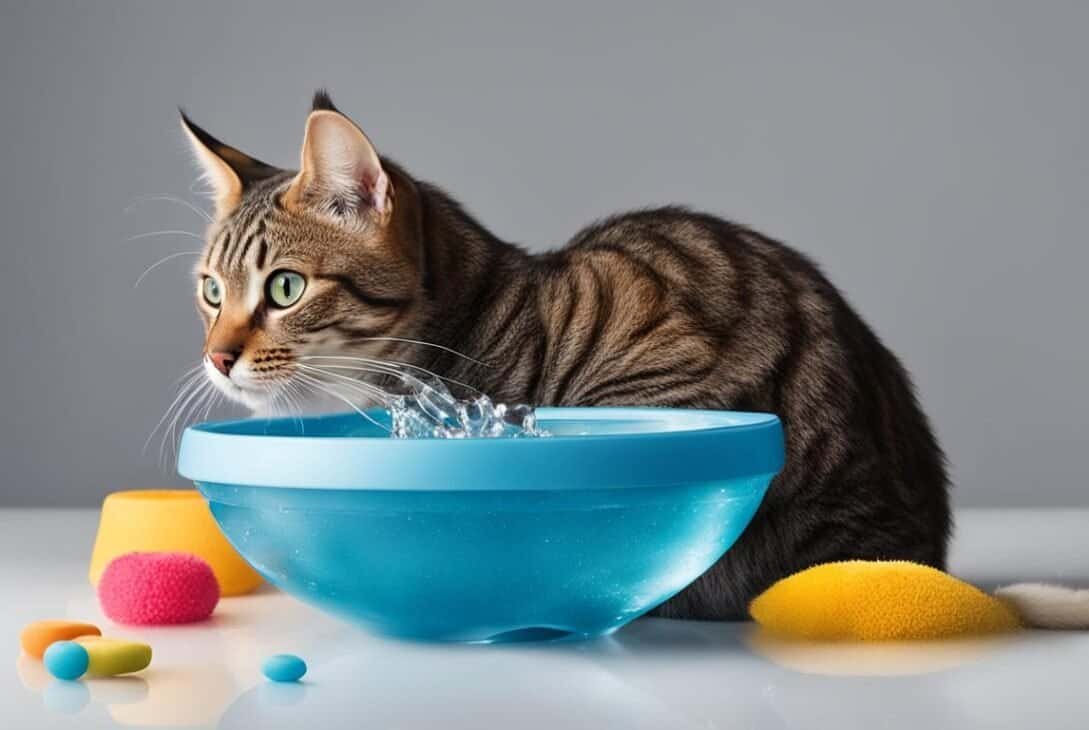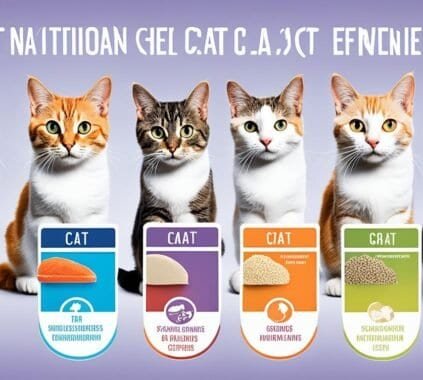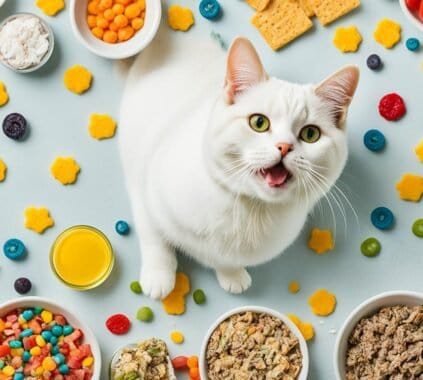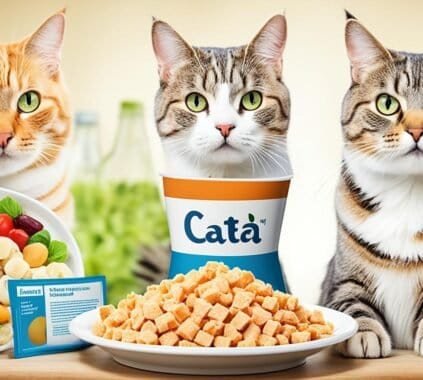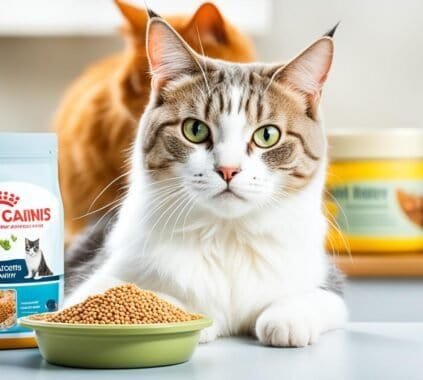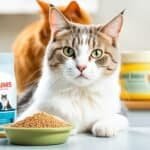Water is essential for the survival and well-being of our feline friends. As cat owners, it’s crucial that we understand the importance of cat water intake and take steps to ensure that our furry companions stay properly hydrated.
Cats are unique creatures with their own drinking habits. Despite their low thirst drive, it is vital to encourage them to drink water regularly to prevent dehydration. Water makes up a significant portion, about 60-70%, of their body weight and plays a vital role in maintaining balanced electrolytes and supporting healthy organ function.
Cats have evolved from desert dwellers, leading to their preference for fresh, moving water. They have a keen instinct for finding water sources that are free from contaminants and may be more inclined to drink from a flowing stream or faucet. This preference can make it challenging to ensure that they consume enough water, especially if they rely on dry kibble as their primary food source.
Certain conditions, such as chronic kidney disease, can make cats more prone to dehydration. This is why it’s crucial for cat owners to be aware of the signs of dehydration, including dry gums, lethargy, loss of appetite, and decreased skin elasticity. Identifying these signs early on can help in preventing more severe health complications.
To ensure that your cat stays properly hydrated, there are several steps you can take. By providing the right water bowl, placing it in an easily accessible location, and keeping the water fresh, you can encourage your cat to drink more. Additionally, trying a cat water fountain and incorporating wet cat food into their diet can also help increase their water intake.
Key Takeaways:
- Water is vital for cats, making up 60-70% of their body weight.
- Cats evolved from desert dwellers and have a preference for fresh, moving water.
- Certain conditions, like chronic kidney disease, can make cats more prone to dehydration.
- Signs of dehydration in cats include dry gums, lethargy, loss of appetite, and decreased skin elasticity.
- You can increase a cat water intake by choosing the right water bowl, placing it in an accessible location, keeping the water fresh, trying a cat water fountain, and adding wet cat food to their diet.
Why is Proper Hydration Important for Cats?
Proper hydration is crucial for the overall wellbeing of cats. Water plays a vital role in their organ function, nutrient transportation, circulation, digestion, and maintenance of electrolyte balance. It also helps prevent urinary stones and aids in toxin elimination through the kidneys. Cats have their own preferences when it comes to water sources and often gravitate towards fresh, moving water. It’s important to promote adequate hydration to prevent dehydration-related issues and support optimal feline health.
What Causes Dehydration in Cats?
Cats can become dehydrated due to various factors. Their low thirst drive, inherited from their desert-dwelling ancestors, makes them drink less water compared to dogs. Cats have near-sightedness issues and may struggle to visualize the edge of the water in a bowl. Their drinking behavior, involving curving the tongue into a J-shape, is also inefficient, resulting in minimal cat water intake per lap. Cats’ sensitivity to the taste and presentation of water makes them prefer fresh, moving water. Certain medical conditions, like chronic kidney disease, diarrhea, or diabetes, can make cats more prone to dehydration.
Dehydration in cats can be caused by several factors, including their low thirst drive, near-sightedness issues, and the nature of their drinking behavior. Additionally, certain medical conditions can increase their susceptibility to dehydration. Understanding these causes is crucial for promoting proper hydration and preventing dehydration-related health issues in cats.
Signs of Dehydration in Cats
Dehydration in cats can have serious consequences for their health. It’s crucial for cat owners to recognize the signs of dehydration to ensure prompt intervention and treatment. Here are some common indicators to look out for:
- Dry gums: Check your cat’s gums by gently lifting their lip. If their gums appear dry and sticky instead of moist and slick, it could be a sign of dehydration.
- Lethargy or depression: If your cat is unusually tired, lacks energy, or seems down, it may be a symptom of dehydration.
- Loss of appetite: Dehydration can cause cats to lose interest in eating or drinking. If you notice a significant decrease in your cat’s appetite, it could be a red flag.
- Decreased skin elasticity: Gently pinch the skin on your cat’s shoulders. If the skin takes longer to return to its original position or stays gathered, it’s called “skin tenting” and can be an indication of dehydration.
- Elevated heart rate: Place your hand on your cat’s chest and count their heartbeats per minute. An unusually fast heart rate can be a sign of dehydration.
If you observe any of these signs of dehydration, it’s important to consult a veterinarian for proper diagnosis and treatment. Early detection and intervention can prevent further complications and help restore your cat’s health.
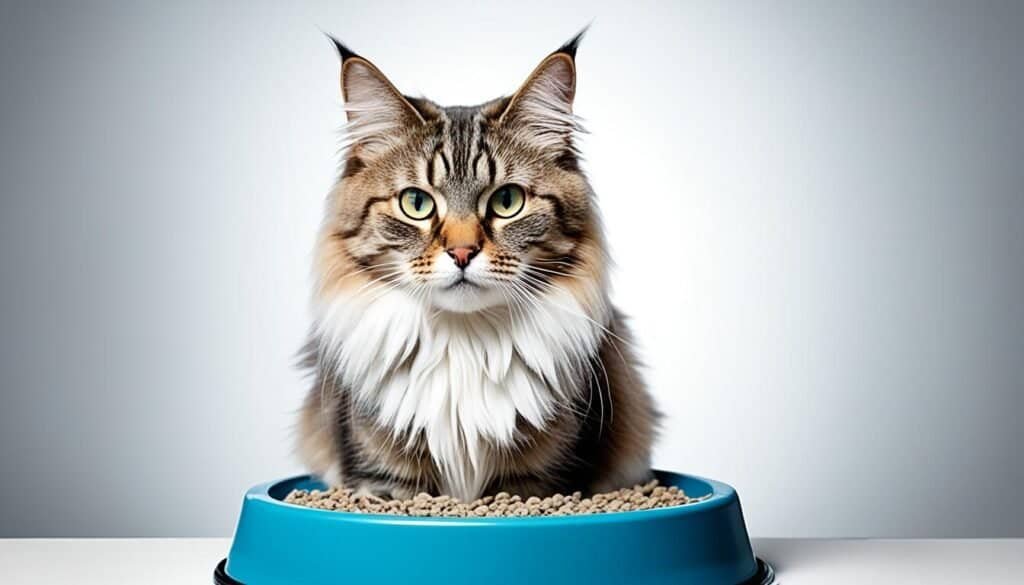
How Much Water Should a Cat Drink?
The daily cat water intake for cats can vary based on their weight and diet. The amount of water a cat needs to drink depends on whether they consume dry kibble or canned wet food. Cats typically require more water when eating dry food, as it has a lower moisture content compared to wet food.
Cats face unique challenges when it comes to drinking enough water. Their tongue shape makes it difficult for them to consume large amounts of water in one lap. In fact, a single lap only provides approximately 3/100 of a teaspoon of water. As a result, cats may struggle to stay hydrated.
It’s important to note that excessive water consumption in cats can sometimes indicate underlying health issues, such as hyperthyroidism or diabetes. Therefore, it’s crucial to monitor cat water intake and consult with a veterinarian if there are concerns about their water consumption levels.
To ensure optimal cat water intake, it’s important to provide fresh water at all times. Consider using a wide and shallow water bowl that accommodates a cat’s unique tongue shape. This will make drinking more comfortable and accessible for them. Additionally, placing the water bowl in a location where the cat feels safe and comfortable can encourage regular cat water intake.
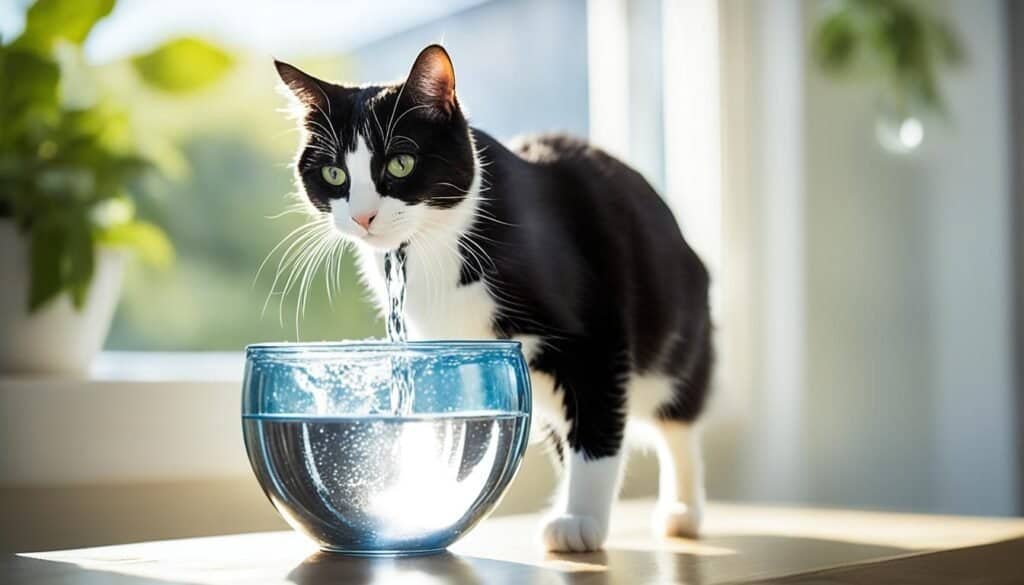
Remember that each cat is unique, and their water intake may vary. It’s always best to consult with a veterinarian for personalized advice regarding your cat’s hydration needs.
How to Get a Cat to Drink Water
Promoting cat hydration and increasing cat water intake can require some effort and experimentation. Here are a few tips to help encourage your feline companion to drink more water:
- Choose the right water bowl: Opt for a wider and shallower dish rather than a deep bowl. This can make drinking more comfortable for cats, allowing them to access the water easily.
- Consider the location: Place the water bowl in a quiet and calm area that allows cats to observe their surroundings. Cats prefer to drink in a safe and peaceful environment.
- Keep it fresh: Change the water in the bowl one to two times a day to ensure freshness. Cats are more likely to drink when the water is clean and free from debris.
- Try a cat water fountain: Cats are naturally attracted to fresh, moving water. A cat water fountain can provide the appeal of running water, encouraging cats to drink more.
- Supplement with wet cat food: Adding wet cat food to your cat’s diet can help increase their water intake. Wet food has a higher moisture content, contributing to overall hydration.
By implementing these strategies and considering your cat’s preferences, you can help promote cat hydration and ensure they are getting enough water for their overall health and well-being.
Conclusion
Ensuring proper hydration is crucial for maintaining your cat’s health and overall wellbeing. Cats have unique preferences when it comes to water sources, so it’s important to find the methods that work best for your furry friend. By monitoring cat water intake, recognizing signs of dehydration, and taking steps to increase water consumption, you can help promote optimal feline health.
It’s always a good idea to consult with a veterinarian if you have any concerns about your cat’s water intake or hydration levels. They can provide valuable guidance and recommendations tailored to your cat’s specific needs.
Remember, by understanding the importance of proper hydration and implementing simple tips, such as choosing the right water bowl, keeping the water fresh, and even adding wet cat food to their diet, you can support your cat in staying hydrated and enjoying a happy, healthy life.
FAQ
Why is proper hydration important for cats?
What causes dehydration in cats?
What are the signs of dehydration in cats?
How much water should a cat drink?
How can I get my cat to drink more water?
What can I do if my cat refuses to drink water?
Can excessive water consumption in cats be a cause for concern?
Is there anything else I should know about cat water intake?
Last modified: February 26, 2024

